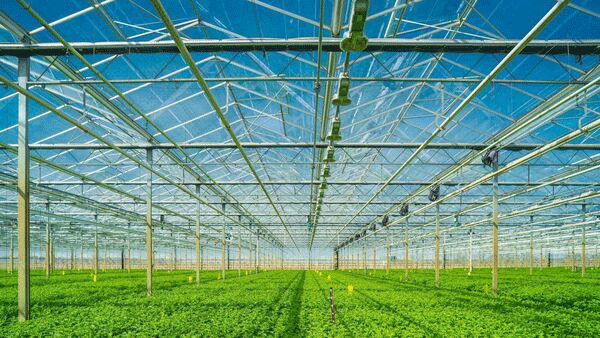A recent study from the University of Copenhagen shows a stunning expansion in the area devoted to protected crops worldwide, reaching approximately 1.3 million hectares – almost three times more than previously thought. Using advanced algorithms and satellite imagery, the researchers mapped this growth over the past 40 years, highlighting its profound impact on farming practices and food production.
The study results show that the cultivation of protected crops has increased sharply around the world, with the largest share in China. China alone is home to 60% of the world’s greenhouse agriculture, with a significant cluster located near the city of Weifang in northeast China. Covering more than 82,000 hectares, this region mainly produces high-value fruits and vegetables such as strawberries, grapes, kiwi and dragon fruit. The rapid expansion of greenhouse farming in China has been driven by economic growth, urbanization and significant government support.
Greenhouses covered with materials such as plastic film, polycarbonate or glass provide a controlled environment that increases crop yields by extending the growing season and optimizing conditions such as temperature and lighting. Innovations such as drip irrigation, artificial soil and hydroponics further increase productivity. Between 1990 and 2020, these advances allowed Chinese farmers to increase production of tomatoes, cucumbers and gherkins sixfold.
Other significant greenhouse gas clusters have been identified in Almeria, Spain; Bari, Italy; Antalya, Türkiye; and Chapala, Mexico. The comprehensive mapping also includes data from 119 countries, including Spain (5.6% of global greenhouse area), Italy (4.1%), Mexico (3.3%), Turkey (2.4%) and several others in as key players in greenhouse farming. It is noteworthy that greenhouses in Africa are mainly used for the production of vegetables and cut flowers.
Previous estimates of the extent of greenhouse gases relied heavily on industry reports, which underestimated the true extent. The current estimate of 1.3 million hectares is conservative because it excludes seasonal production of less than a year. This highlights the dynamic and expanding nature of greenhouse agriculture.
Researcher Xiaoye Tong attributes China’s greenhouse boom to robust economic growth, urbanization and government incentives. Similar trends are being seen in other arid and semi-arid regions, where greenhouses have improved local food security and reduced poverty.
However, the report also raises concerns about the environmental and social impacts of greenhouse farming, particularly in the Global South. Problems such as overexploitation of water resources, high energy consumption, groundwater pollution, soil degradation, plastic pollution and poor working conditions are prevalent. Co-author Marianne Nylandsted Larsen highlights the need for better regulation to mitigate these negative impacts.
The dramatic growth of greenhouse agriculture represents both a triumph in increasing food production and a challenge in managing its environmental and social impacts. As protected farming continues to grow, especially in regions like China, it is critical to balance agricultural productivity with sustainable practices and fair working conditions.










